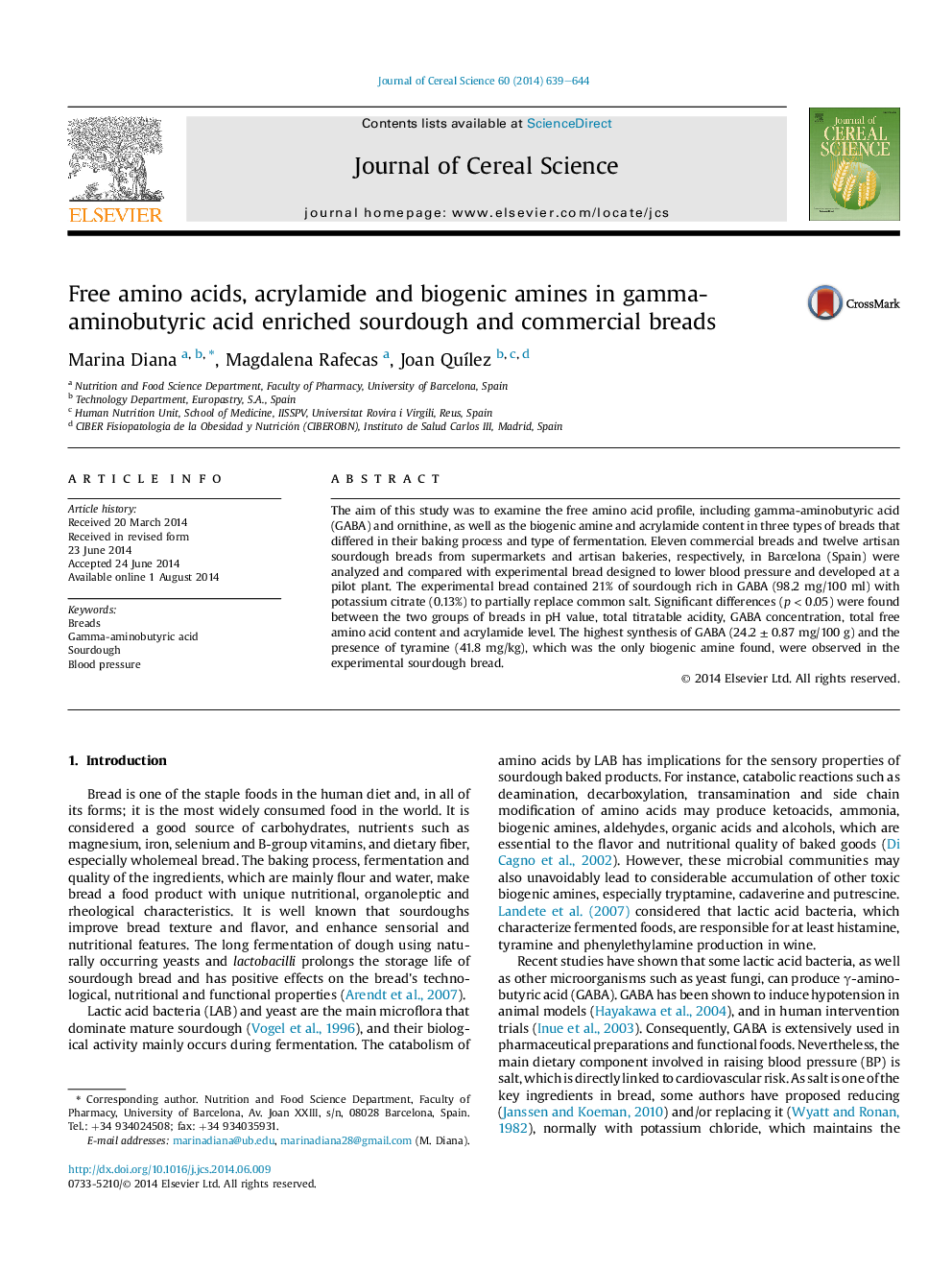| Article ID | Journal | Published Year | Pages | File Type |
|---|---|---|---|---|
| 4515770 | Journal of Cereal Science | 2014 | 6 Pages |
•Experimental bread had the highest GABA content of all breads analyzed.•Artisan breads had GABA levels that were significant higher than commercial breads.•Lactobacillus brevis CECT 8183 is a potential starter for GABA-enriched sourdough.•Acrylamide content in breads was too low to have any toxicological effect.
The aim of this study was to examine the free amino acid profile, including gamma-aminobutyric acid (GABA) and ornithine, as well as the biogenic amine and acrylamide content in three types of breads that differed in their baking process and type of fermentation. Eleven commercial breads and twelve artisan sourdough breads from supermarkets and artisan bakeries, respectively, in Barcelona (Spain) were analyzed and compared with experimental bread designed to lower blood pressure and developed at a pilot plant. The experimental bread contained 21% of sourdough rich in GABA (98.2 mg/100 ml) with potassium citrate (0.13%) to partially replace common salt. Significant differences (p < 0.05) were found between the two groups of breads in pH value, total titratable acidity, GABA concentration, total free amino acid content and acrylamide level. The highest synthesis of GABA (24.2 ± 0.87 mg/100 g) and the presence of tyramine (41.8 mg/kg), which was the only biogenic amine found, were observed in the experimental sourdough bread.
